Windows Task Scheduler allows users to perform routine tasks on their computers automatically. Computer resources, including processors, network links, or expansion cards, are assigned certain tasks to be carried out at a specific time. However, users encounter Task Scheduler error 0xe0434f4d when a task has been scheduled and is to be executed. If you are experiencing this same problem and looking to fix it, this article will help you understand the causes of this issue and guide you on how to fix it for good. Keep reading.
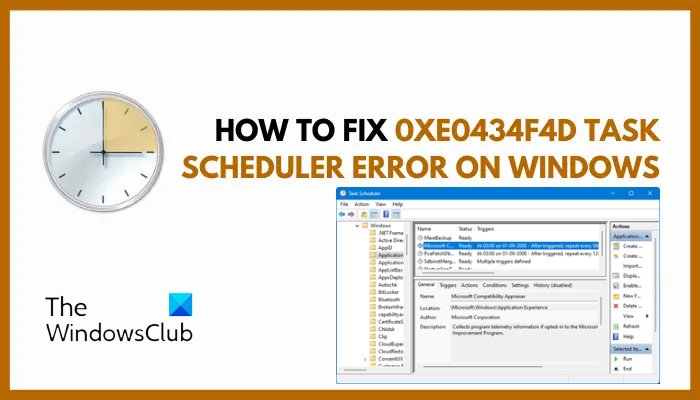
Why is my Scheduled Task not running?
When you have scheduled a task using the Windows Task Scheduler and it fails to execute, it returns with the 0xe0434f4d exit code. This simply implies that the task is crashing with an Unhandled exception when it is run. An outdated or compromised .NET framework version could be the reason for this error on a Windows computer. Other factors include compromised system files, malware attacks, and conflicting tasks.
Fix 0xE0434f4D Task Scheduler error on Windows 11/10
To fix the Task Scheduler error 0xe0434f4d error on your Windows computer, we will walk you through several proven solutions and workarounds:
- Repair or Clean Install .NET Framework
- Fix Corrupted System Files
- Delete Suspected Conflicting Task
- Troubleshoot in Clean Boot State.
1] Repair or Clean-Install .NET Framework
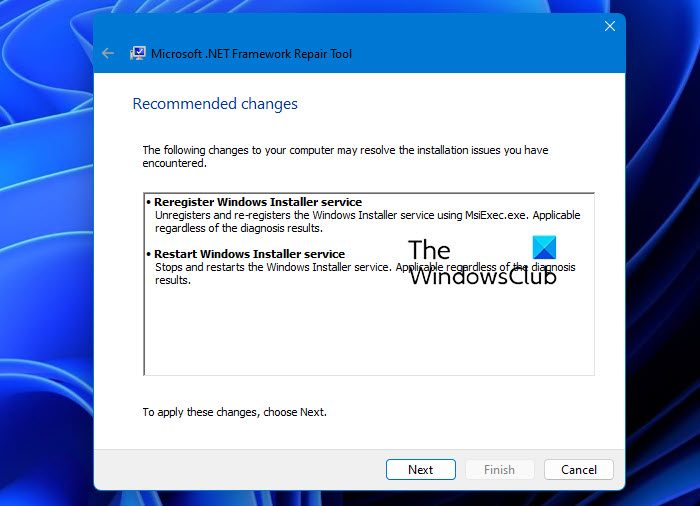
Run the .NET Framework Repair Tool from Microsoft and see if that helps. This tool troubleshoots common issues with the setup of or with updates to Microsoft .NET Framework setup installation. Additionally, this tool tries to resolve these issues by applying known fixes or by repairing the installed product.
If that does not help, you can completely remove some or just old versions of the .NET framework using .NET Framework Setup Cleanup Tool. Having done that go to the official Microsoft page to download the latest version of .NET Framework, install it, and restart your computer subsequently to confirm that the issue is resolved.
2] Fix Corrupted Windows System Image
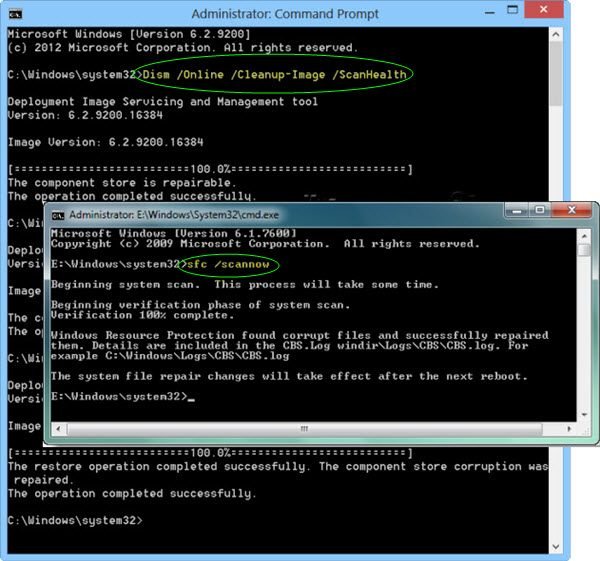
Run the System File Checker first, restart your computer, and then run the DISM Tool to repair the System Image. After restarting your computer, again run the System File Checker and see if it helps in any way.
5] Delete Suspected Conflicting Tasks
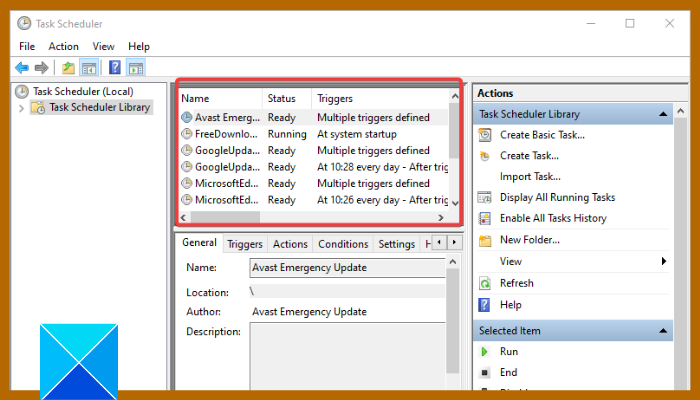
We have mentioned earlier that conflicting tasks in the Task Scheduler Library could be the reason you get the 0xe0434f4d exit code. In this case, you must delete tasks that you suspect to be compromised.
Now, this one is a bit tricky, and some intelligent guesswork may be required on your part.
- Open the Start Menu, type “Task Scheduler” in the search bar, and open it.
- Navigate to the Task Scheduler Library on the left side of the screen.
- From the list of tasks, right-click on any one you suspect to be the problem and select Disable.
- Restart your computer, and check if the problem has been fixed.
In the case that the disabled task is the one responsible for the conflict, go back to right-click on it and select Delete.
You will, however, have to decide which of the two Tasks are more important and need to run on your system.
5] Troubleshoot in Clean Boot
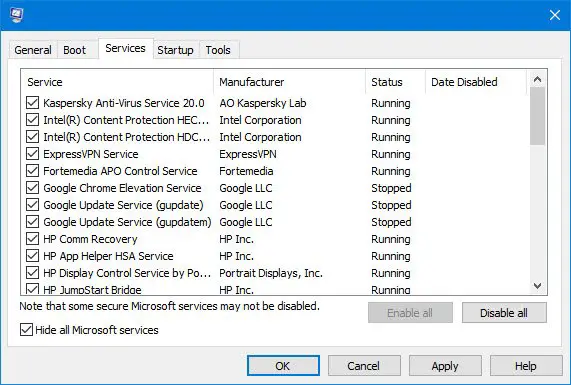
The last solution we advise that you should implement is to troubleshoot in a clean boot state. Other running system applications may conflict with the scheduled task, returning with the 0xe0434f4d task scheduler error instead of executing.
To perform clean-boot troubleshooting, you must take several actions, and then restart the computer after each action. You may need to manually disable one item after another to try and pinpoint the one that is causing the problem. Once you have identified the offender, you can consider removing or disabling it.
In conclusion, this error may be caused by different factors, and since you are not sure of which is responsible for the exit code, endeavor to try out these fixes one by one until the problem is completely resolved.
Read: How to run Scheduled Task as Administrator in Windows.
What happens if I disable Task Scheduler?
The Windows Task Scheduler is responsible for multiple critical system tasks, and when disabled, these system tasks will fail to start. Also, since the tasks are critical to the smooth operation of the operating system, it is unsafe to disable it.
Read: Task Scheduler Error and Success Codes explained
Can you run Task Scheduler without admin rights?
If the tasks are created by another user, a non-administrative user does not have access to view or manage those tasks. However, the creator of the tasks can grant you permission to view and run them.